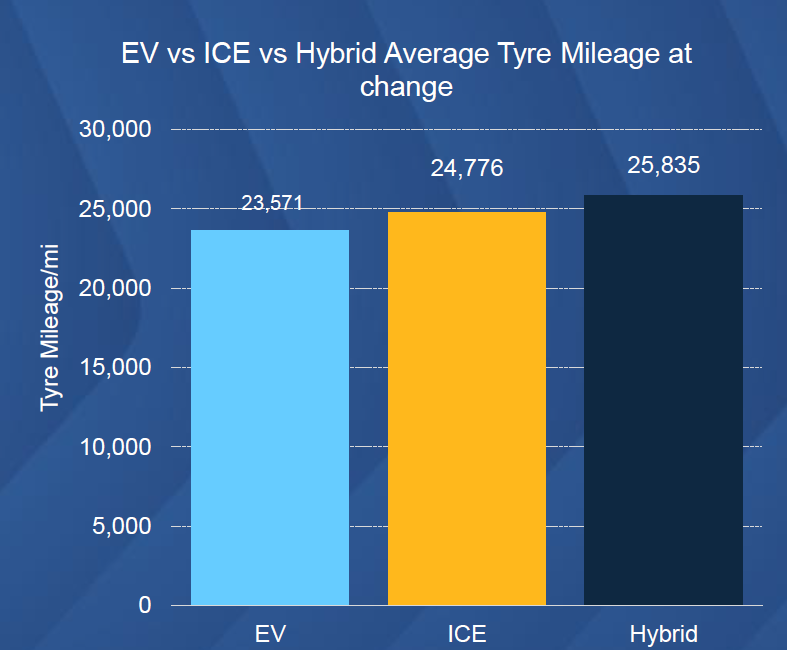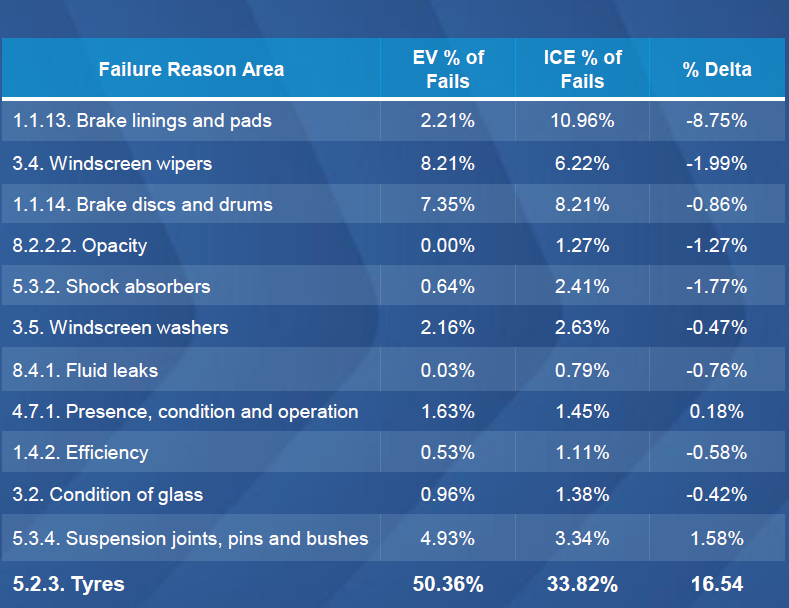With the colder weather just around the corner, now is the perfect time to give your car a little TLC. We’ve put together some top tips focusing on general maintenance to avoid breakdowns and, critically, checking your tyres. These easy steps will help keep both EV and petrol drivers safe as we head into the new year.
Our tyre supplier, Kwik Fit, has furnished us with a comprehensive annual report on the tyre market, highlighting several key trends and interesting figures. 312,891 new cars were registered.

The Difference in Tyre Mileage and Wear Between EVs and ICE Vehicles
EVs present distinct challenges regarding tyre wear due to their increased weight (from the battery pack) and high instantaneous torque.
Data suggests that tyres on EVs wear approximately 5% faster than those on comparable Internal Combustion Engine (ICE) vehicles.
- EV Average Mileage: 23,604 miles
- ICE Average Mileage: 24,776 miles
Note: This difference is an average and can vary significantly based on vehicle model, tyre brand, and driver behaviour.

Regardless of what vehicle type you drive, cold, wet, or icy roads demand excellent tyre health. Cold affects tyre pressure and traction, directly impacting your stopping distance.
Check Regularly: Keep a close eye on your tyre tread depth and pressure.
Vehicle Maintenance and MOTs
EVs should be maintained year-round, but the colder months require a little more attention. Cold weather can reduce your battery range by 10-20% due to the demands of heating and reduced battery efficiency.
- Precondition: Always warm up your EV while it’s still plugged in. This saves precious battery power for your drive. Use the preconditioning feature to heat the cabin and battery before you leave.
- Stay Charged: Try to maintain a charge above 20% to avoid placing strain on the battery in freezing conditions. Choose well-lit, safe charging spots, especially if service areas have reduced winter hours.
Emergencies don’t take a holiday, either. Have a winter driving kit ready for both EVs and ICE (internal combustion engine) vehicles. Essentials, as recommended by the RAC, include:
- Ice scraper and de-icer
- Warm blankets and spare clothes
- A fully charged torch and first-aid kit
- Extra battery packs for your phone
MOTs and Reasons for Failure
Tyres are becoming the major differentiator in MOT failures between EV and ICE vehicles. Proactive tyre care and rotation are therefore critical for EV owners to ensure vehicle safety and successfully pass the annual MOT test.

All-Season Tyres Vs Seasonal Tyres
All-season tyres are seeing significant growth in the UK. Given the UK has a generally mild climate, all-season tyres are recommended for longer-lasting performance. On dry and wet roads in mild-to-warm conditions, all-season tyres will generally offer better grip, handling, and shorter braking distances compared to an overly soft winter tyre.
65% of UK motorists would consider an all-season tyre, and this is the fastest-growing tyre segment in the UK. All-season tyres are up in sales with a 6% increase. Drivers also avoid the hassle, cost, and time of changing tyres twice a year (switching from summer to winter and back again).
As shown in the graph, all-season tyres outperform summer tyres on expected tyre mileage. All-season tyres provide a safe, hassle-free alternative that performs well enough in summer and offers a significant safety advantage over summer tyres in cold, wet weather.

Kwik Fit and EVs
Despite all these changes, a growing market, and a change in trends, JCT600 VLS drivers can rest easy knowing Kwik Fit is EV-ready. Kwik Fit offers a free vehicle safety check, so you can drive this winter with confidence. Pop in to your local Kwik Fit centre for your free safety check!

